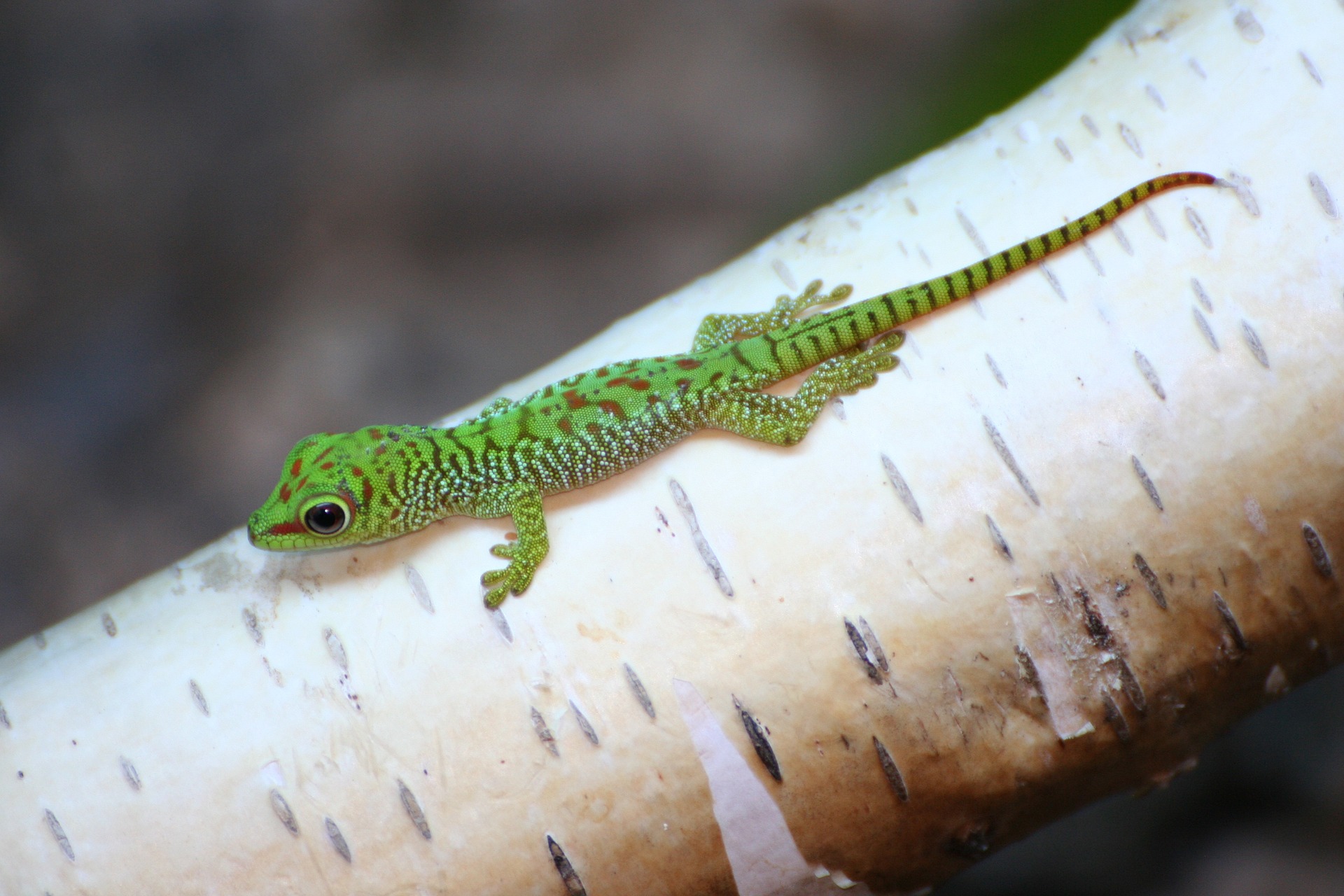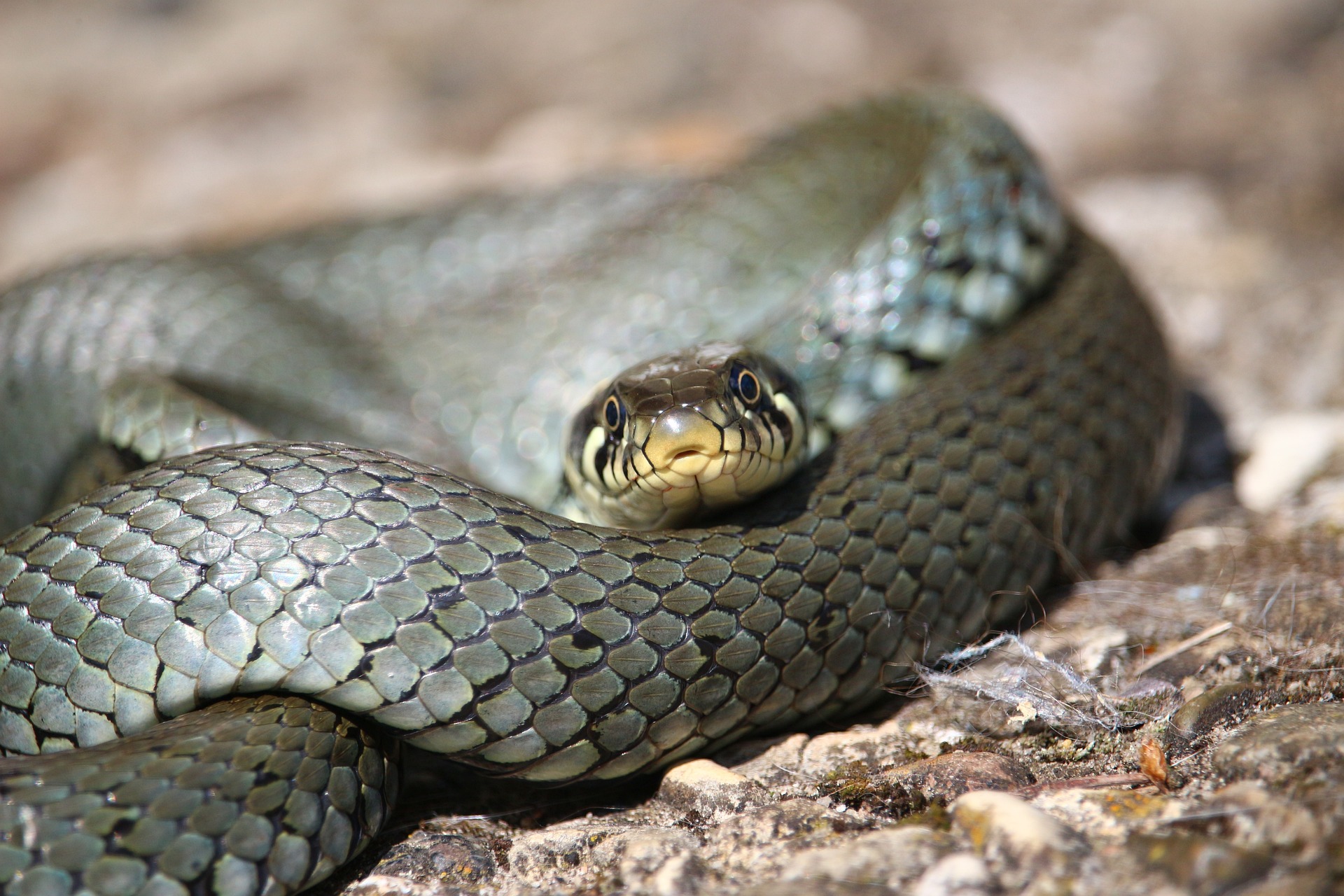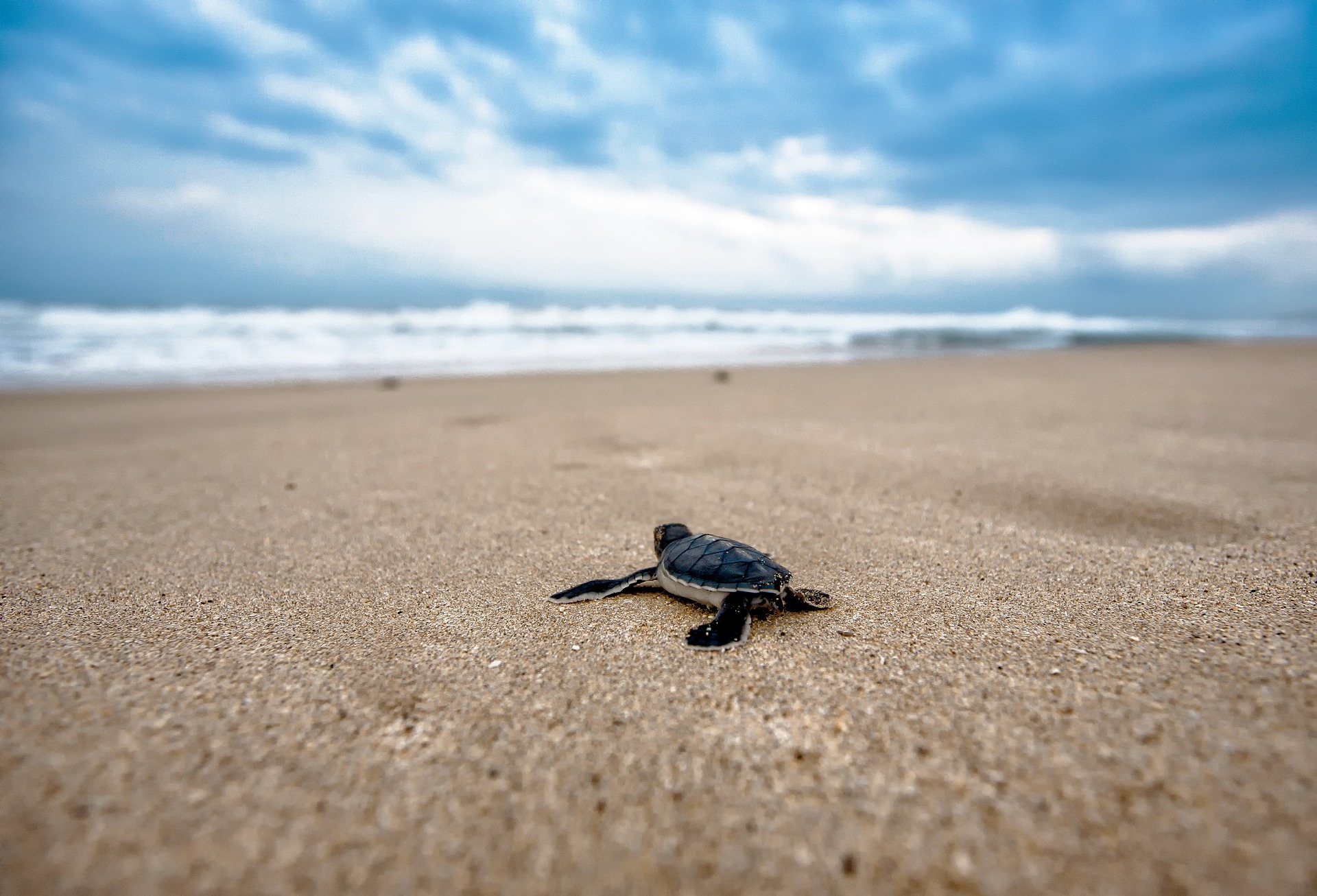Bright Side of the Night – 2.2.4
Reptiles
Reptiles, like all invertebrates, fishes, and amphibians, are completely dependent on the environmental temperature for their body temperature. Many reptiles regulate their body temperature through behavior such as sunbathing. In Central Europe, there are reptiles that are active during the day and in some cases at dusk, such as the European pond turtle, various species of snakes and lizards. Lacertid and iguanid lizards are even strongly diurnal. Geckos, in turn, are nocturnal. Reptiles can also perceive in the UV range, which is invisible to us, and some snake species can even perceive in the infrared range (which is also invisible to humans). Reptile species are disappearing at an alarming rate and deserve acute attention and protection.
Geckos
Three of four gecko species are crepuscular and nocturnal. They have large eyes. At least one species is known to recognize colors at night. Many geckos are found in urban areas and hunt the insects drawn to sources of artificial light at dusk or at night, while spending the day hiding in buildings, or holes. The crepuscular and nocturnal wall gecko (Tarentola mauritanica) occurs extensively in the coastal regions of the Mediterranean area. The European half-fingered gecko (Hemidactylus turcicus) is also found in the Mediterranean region. Two special facts about geckos are that the female can store sperm for a whole year, and that they live in colonies with a communal toilet.
Loggerhead Sea Turtles
The loggerhead sea turtle (Caretta caretta) is a well-known and relatively common member of the sea turtle family, found in tropical and subtropical seas, including the Mediterranean. It is known today that these turtles possess a magnetic sense. The diet of sea turtles consists mainly of crustaceans, cephalopods, jellyfish, sea urchins and other animals, but they also eat sea grass.
Sea turtles live in the ocean but hatch on beaches. Light pollution has severe negative impacts on the orientation of hatchlings. They are distracted by artificial lights and often do not find their way back to the ocean.

Further Resources
Links below will redirect you to external websites. In accordance with the European data protection declarations, we would like to point out that by clicking on these links you may send data to external providers. We cannot prevent that.
Images
![]() A vast number of photos of reptiles can be accessed at Pixabay.
A vast number of photos of reptiles can be accessed at Pixabay.
Videos
![]() Learn how biologists are trying to save sea turtles from becoming victims of artificial lighting
Learn how biologists are trying to save sea turtles from becoming victims of artificial lighting
![]() Short film: Light pollution harms sea turtles
Short film: Light pollution harms sea turtles
![]() Guardians of the Night: Reducing Light Pollution on Sea Turtle Nesting Beaches
Guardians of the Night: Reducing Light Pollution on Sea Turtle Nesting Beaches
Online Resources
![]()
 The influence of light pollution on plants, animals and ecosystems (Helle Not)
The influence of light pollution on plants, animals and ecosystems (Helle Not)
![]()
 What happens at night just beyond our doorstep? Bothersome-Brightness-Cartoons. (Helle Not)
What happens at night just beyond our doorstep? Bothersome-Brightness-Cartoons. (Helle Not)
![]()
 Verlust der Nacht / Loss of the Night: Interdisciplinary Research network
Verlust der Nacht / Loss of the Night: Interdisciplinary Research network
![]() Into the Night in the Kaunertal Valley (Online publication)
Into the Night in the Kaunertal Valley (Online publication)
 Unterwegs in die Nacht im Kaunertal (Online publication)
Unterwegs in die Nacht im Kaunertal (Online publication)
 Konzept zur nachtbezogenen Naturpädagogik (Online publication)
Konzept zur nachtbezogenen Naturpädagogik (Online publication)
 Conseguenze ambientali e rischi per la salute dell’inquinamento luminoso – Sigma Earth
Conseguenze ambientali e rischi per la salute dell’inquinamento luminoso – Sigma Earth
 L’inquinamento luminoso minaccia la vita marina – National Geographic Italia
L’inquinamento luminoso minaccia la vita marina – National Geographic Italia
 SOS tartarughe marine – Common
SOS tartarughe marine – Common
Further Readings
![]()
 Regularly updated Literature and links with regards to light pollution and dark skies (Helle Not)
Regularly updated Literature and links with regards to light pollution and dark skies (Helle Not)
![]()
 Literature & Links on the website “Verlust der Nacht/Loss of the Night”
Literature & Links on the website “Verlust der Nacht/Loss of the Night”
![]() Scientific paper on night lights and reptiles
Scientific paper on night lights and reptiles
![]() Scientific paper on the “Effects of night lights on urban reptiles and amphibians”
Scientific paper on the “Effects of night lights on urban reptiles and amphibians”
![]() Summary of studies about the effects of light pollution on reptiles.
Summary of studies about the effects of light pollution on reptiles.
![]() Information about the behavior of sea turtles
Information about the behavior of sea turtles
 Nachtfibel: Nachts in den Naturparken Luxemburgs
Nachtfibel: Nachts in den Naturparken Luxemburgs
Teaching Material
For Kids
![]()
 Materials for young scientists: Quiz, Arts and craft corner, App and Exhibition for schools. (Loss of the Night network)
Materials for young scientists: Quiz, Arts and craft corner, App and Exhibition for schools. (Loss of the Night network)
 Unterrichtsmaterialien für Schulen – “Tierprofi Wildtiere” (Die Umweltberatung)
Unterrichtsmaterialien für Schulen – “Tierprofi Wildtiere” (Die Umweltberatung)
 Unterrichtsmaterialien für Schulen – “Lichtverschmutzung” (Die Umweltberatung)
Unterrichtsmaterialien für Schulen – “Lichtverschmutzung” (Die Umweltberatung)
 Wissens- und Methodenbox „Kunstlicht, Nacht und Sternenhimmel“ (Naturfreunde)
Wissens- und Methodenbox „Kunstlicht, Nacht und Sternenhimmel“ (Naturfreunde)
 Effetti dell’inquinamento luminoso sugli animali – Simone Sapienza
Effetti dell’inquinamento luminoso sugli animali – Simone Sapienza


